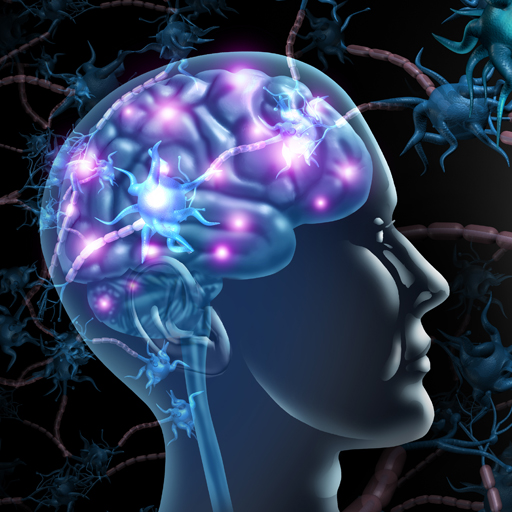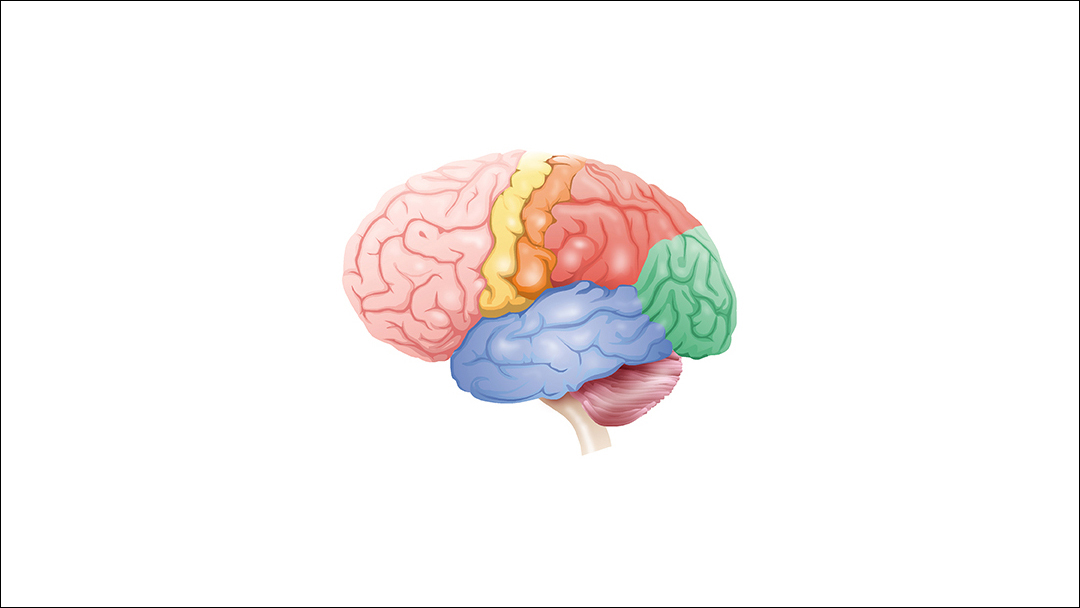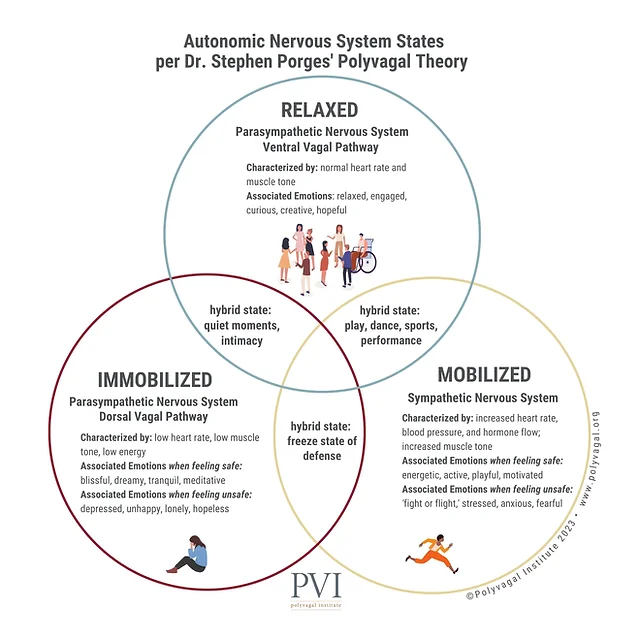
Understanding the impact of trauma on the brain helps us understand why we get stuck in the trauma and get tricked into thinking we are constantly unsafe. Our brain and nervous system is a complex and finely tuned network designed to protect us from danger. However, when we experience trauma, this intricate system can become disrupted, leading us to feel constantly unsafe, even when no real threat is present. Below, I’ll explain how our nervous system responds to threats, starting with the concept of neuroception—the subconscious process by which our brain evaluates safety and danger.
Effects of trauma on the brain and body
Neuroception
Something can happen in our brains when we’ve experienced a trauma -our brains get stuck in it, and we get tricked into thinking we are still in the trauma and constantly unsafe.
On a subconscious level, we are constantly evaluating our environment, and the people within it, for cues that could signal safety or danger. This inbuilt risk detector in our nervous system is called our neuroception. Coined by Dr. Stephen Porges, neuroception is our brain’s ability to rapidly assess the environment and decide whether anything within it poses a threat to our safety. Have you ever had a gut instinct, or intuition, that something or someone just wasn’t right or should not be trusted? Well that’s your neuroception at work!
Fight / Flight / Collapse
According to Stephen Porges’ Polyvagal Theory, our nervous system has three response options when faced with threat or a traumatic event: fight, flight or collapse. It opts for either of the two most recent evolutionary response options first; fight or flight.
Fight
Our fight response includes fighting with our bodies, but it also includes other responses that involve defending ourselves from harm. For example:
- Verbal confrontations including assertiveness, setting boundaries, challenging or confronting the threat verbally.
- Aggressive behaviour like yelling, shouting, swearing, making threatening gestures.
- Adopting defensive postures like clenching fists or adopting a defensive stance in preparation for a physical altercation or raising arms to protect from harm.
- Heightened arousal such as increased heart rate, muscle tension and adrenaline release. These physiological reactions prepare the body for action.
Flight
Flight responses include running away from threat, but also include
- Avoidance behaviours, like avoidance or people or places they perceive as threatening.
- Hyperactivity, such as restlessness or heightened levels of activity to distract themselves or escape a perceived threat.
- Seeking reassurance can include reaching out to others for support, guidance, comfort or protection in order to cope with the perceived threat.
Collapse
When it’s too dangerous to fight back or run away, our nervous system uses the oldest evolutionary response, which is collapse. This one is often the hardest to understand, especially for people who aren’t having the experience. For example, we’ve all heard of the victim survivor of rape, who didn’t fight or flee from their attacker (or in one famous case, asked her perpetrator to put a condom on). Their neuroception assesses that there’s no point, or it’s too dangerous to fight or run, so they ‘let’ the rape happen as it’s the most likely option that will ensure their survival. That’s the collapse response in action. Here are some other ways that the collapse response can manifest.
- Freezing happens when a person’s body becomes immobile or stuck and they aren’t able to voluntarily move.
- Tonic immobility happens in extreme cases of fear or trauma. The body ‘plays dead’ – the muscles become rigid and the body becomes stiff and unresponsive to external stimuli.
- Dissociation happens when the mind disconnects from the person’s surroundings and their emotions as a way to cope with overwhelming stress or danger when they can’t escape. People can feel lightheaded or ‘floaty’ on the milder end of the spectrum through to disconnected from their body, memories and sense of identity on the more severe end. Everyone experiences dissociation differently, so there is a large range of physical manifestations.
- Shutdown – The body’s physiological arousal and activity reduces, which makes the person feel lethargic, apathetic or numb. The person’s heart rate often slows, their blood pressure and muscle tone decreases, as their responsiveness to external stimuli becomes reduced.
Trauma & the Nervous System. A polyvagal perspective
Watch this video – an excellent explainer on fight/flight/collapse and more.
Video source: The Polyvagal Institute
Image source: The Polyvagal Institute
Trauma & Your Nervous System
A healthy nervous system
A healthy nervous system flows from one state to another throughout the day, but when there is no threat present, we label the states differently.
| Safe | When you feel calm, connected and engaged with others. |
| Fight/flight becomes mobilised | You’re mobilised when you engage in activity, like walking and shopping |
| Collapsed becomes immobilised | You’re immobilised when you are at rest, like sleeping. |
All three states help us live our lives. We move from safe to mobilised to immobilised without issue and depending on the activity we are engaged in. Our nervous system also combines states. For example, when lying down to sleep we are safe and immobilised and when we go for a walk with a friend we are safe and mobilised.
A traumatised nervous system
Chronic stress and trauma stops our nervous system from healthy functioning and the easy flow from one state to another and back again. Instead, we get stuck in a fight/flight state of survival. Normally safe activities become frightening. For example, a coffee catch up with friends, which should put our nervous system in a safe state, instead sends our nervous system into a mobilised fight/flight state. Or when having sex with our partner, instead of a safe state our nervous system might send us into a immobilised/collapsed state. Our history of trauma and stress messes with our threat detector. Our neuroception constantly sends our body signals telling us we are unsafe in the absence of any threat. Kind of like those car alarms that get triggered for no reason at all. The alarm is there to alert the owner that someone is breaking into their car, when in reality, someone just brushed passed the car and set the alarm off. The car detects threat when none is present, just like a faulty neuroception that is stuck in old trauma. Living in fight or flight is exhausting. When our nervous system gets stuck in survival mode, the body stays focused on survival rather than activities that keep us happy and healthy. It’s no wonder that people often start to use strategies like drugs, alcohol, food, work or sex to distract or numb themselves from their body constantly signaling alarm.
Understanding how our nervous system responds to threats reveals the huge impact trauma can have on us. Trauma can lead to chronic stress and an ever present sense of danger. Healing from trauma involves therapy which helps you to retrain your nervous system and restore a sense of safety and balance.
If you’re interested in trauma therapy with me, read this article for more information about it.
Read more
Take the First Step Towards Healing
If you're struggling with complex trauma, don't face it alone. Contact me today and start your journey to trauma recovery.
Emotion Regulation and Trauma: Why It Feels So Hard to Manage Your Emotions
If you’ve experienced relational trauma, emotion regulation may be something you really struggle with. Emotion regulation is being able to acknowledge and accept your feelings, to make sense of them without becoming overwhelmed or shutting down, and to respond in a...
Self-Worth Part 2 – How Do I Feel Worthy Enough?
It is possible! Feeling worthy enough now, is about knowing that your worth as a human is not tied to anything external, deeply internalising that you are enough, now, simply for being human. This deep knowing can be achieved in various ways. Obviously I am biased and...
Self-Worth Part 1 – Why You’re Already Enough
One therapy goal that comes up consistently with clients, is a wish for better self-esteem, self-worth, or self-love. The thinking seems to be that this quality needs to be gotten somehow, or more of it needs to be obtained, or built in some way. This thinking makes...





